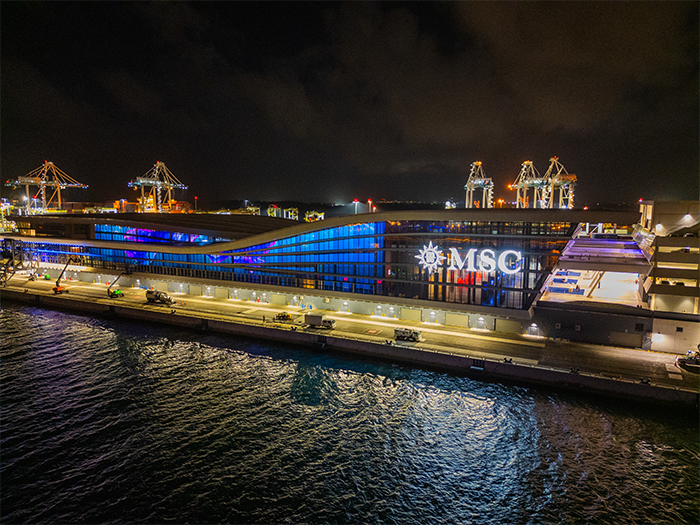
Gauzy announced the official reveal of its smart glass facade at the inauguration of the new MSC Terminal in Miami, Florida.
Project details
More than 11,000 square feet of Gauzy’s exterior-grade grey PDLC (polymer dispersed liquid crystal) adhesive smart film has been integrated into 75% of the terminal’s glass façade. During daylight hours, the glass remains transparent, allowing natural light and views of Biscayne Bay. At night, the façade transforms into an expansive digital art display by acclaimed artist Danielle Roney that draws real-time data, including tides, current and weather patterns, from the National Oceanic and Atmospheric Administration to generate an animation of the marine environment.
Gauzy’s smart glass transparent display fulfills the project's public artworks ordinance requirement, which mandates the integration of artistic elements into major developments. In this case, the smart glass serves both a functional role and also an artistic one, offering a solution where digital displays can qualify toward the percentage of project value typically allocated to public art under city planning regulations.
What Guazy leadership says
“We’re thrilled to work with MSC and Fincantieri Infrastructure, world leaders and amongst the largest players in the cruise industry to bring this unique, interactive experience to life in Miami. This project serves as a stage to show how built spaces, especially in travel, can be enhanced with Gauzy’s smart glass technologies,” says Eyal Peso, CEO of Gauzy.
“We’re proud to be trusted by Fincantieri to bring their vision to life in their first U.S.-based project and global flagship terminal. This project aligns with Gauzy’s commitment to innovative, sustainable, and smart building solutions that captivate and inspire. We look forward to the possibilities of smart glass technologies breaking new ground across the cruise industry, from terminals to on-board vessels.”
